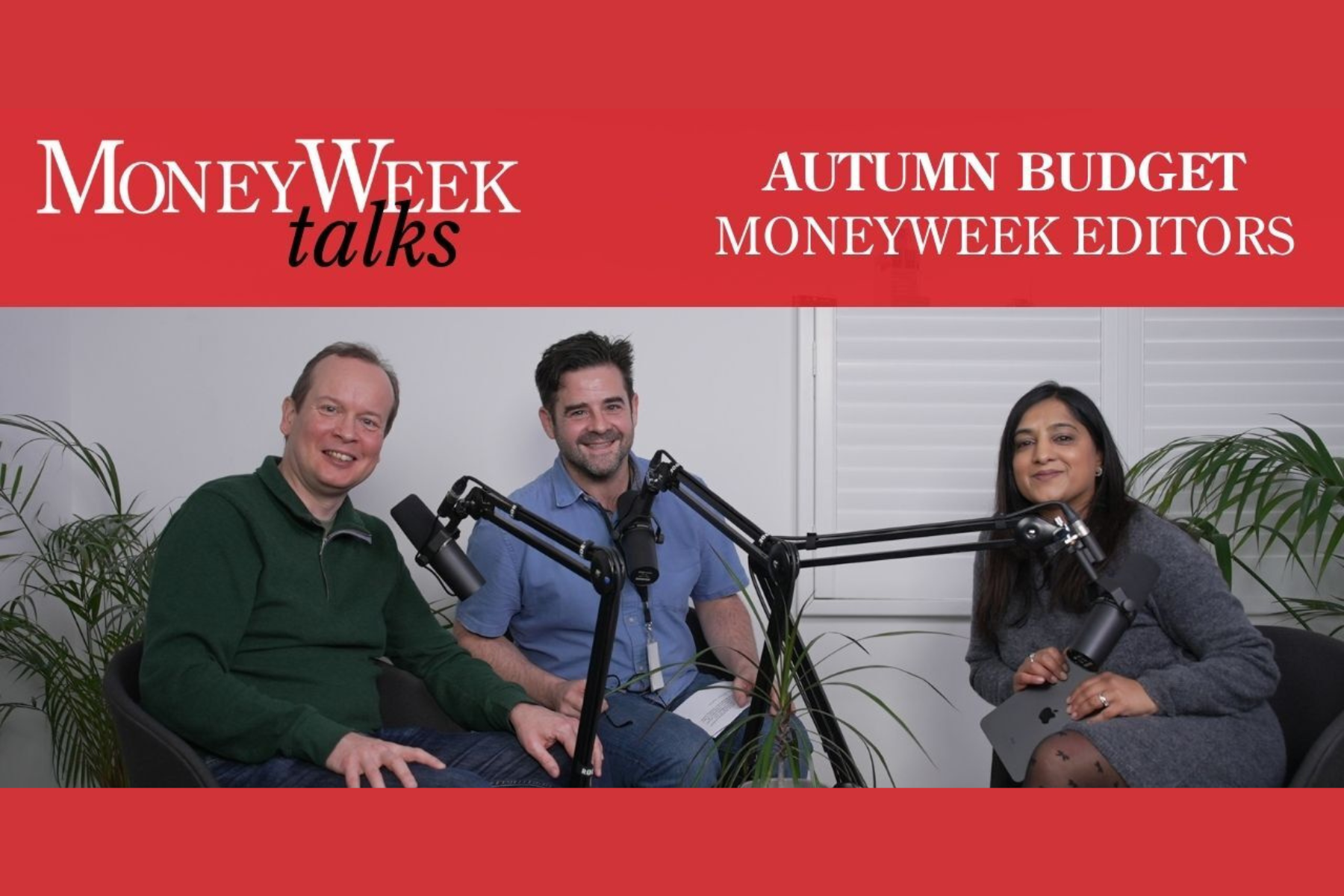Murray International Trust: Twenty years of dividend investing
In 2024, and after twenty years at the helm, Bruce Stout will hand over management of Murray International to Samantha Fitzpatrick and Martin Connaghan. Here, the team consider how dividend investing has changed over that time, and its prospects from here.

Twenty years is a long time in financial markets. It has seen the technology bubble collapse of the early 2000’s, the 2007/08 global financial crisis and, more recently, the global Covid pandemic. Murray International has steered a path through these various crises by focusing intently on its investment objective – to build and grow its payouts to shareholders. However, the tools available to achieve that objective have changed considerably.
In 2003, the Murray International portfolio looked very different to how it is positioned today. It had a significant weighting in the UK, at over 40% of the fund, plus a weighting of around 20% in bonds. It was only lightly invested in faster growing areas, such as technology, or emerging markets. While the mandate was flexible, choice was limited because many regions and sectors did not pay a dividend.
For example, Asian companies had just emerged from their financial crisis, and had neither the inclination nor the wherewithal to pay dividends. Japan had almost no dividend-paying companies, while US and European dividend payouts were patchy, and often confined to single sectors, such as utilities.
MoneyWeek
Subscribe to MoneyWeek today and get your first six magazine issues absolutely FREE

Sign up to Money Morning
Don't miss the latest investment and personal finances news, market analysis, plus money-saving tips with our free twice-daily newsletter
Don't miss the latest investment and personal finances news, market analysis, plus money-saving tips with our free twice-daily newsletter
There was a prevailing view that companies had given up on future growth if they started to pay dividends to shareholders. In the US, senior executives were often rewarded on the growth they could achieve in earnings per share, so spent any spare capital on buybacks rather than dividends. This made it tough to run a global fund truly diversified across sectors and geographies.
The expansion of dividends
The past twenty years have seen an astonishing breadth of choice open up for dividend investors. It is possible to draw an income from equities across a vast range of countries and sectors.
Dividend payers now include technology giants Broadcom in the US or TSMC in Taiwan; plus numerous other companies from across the globe including emerging markets. Investors no longer have to choose between reliable dividends and capital growth. Global dividend portfolios can now be far more diversified, which makes them more robust.
The diversification of global income into new companies and different regions is ongoing. For example, the high end luxury goods companies are now increasing dividend payouts to shareholders, which would have been unheard of even 10 years ago.
Japan’s corporate governance reforms are encouraging companies to use capital more efficiently and, where appropriate, return profits to shareholders through dividends. There is a growing realisation that, rather than implying a company has no pathway to growth, paying dividends can be a sign of strength.
This choice and flexibility has helped manage changes in the dividend landscape. These happen periodically. There was a time when UK banks were a source of stable income and a significant feature of most income portfolios.
The financial crisis saw dividends decimated and share prices tumble. If, however, investors had had the flexibility to look at Asian banks, for example, they would have found opportunities such as Oversea-Chinese Banking Corporation, a well-capitalised, Singapore-based bank which has maintained a solid dividend policy throughout, with dividend growth last year of over 40%.
Equally, flexibility can help investors take advantage of opportunities as they arise. Miners will never be a bedrock of an income fund, but they will have periods of real strength at certain points in the economic cycle.
The dividend landscape is always changing and there will be times to invest in certain areas and times to avoid them. In Murray International we hold a Chilean lithium company, which is currently in the sweet spot for demand, but that will ebb and flow.
While this transformation has been happening in global income, investors have been minutely focused on capital growth, and a handful of technology companies in particular. The majority of the world’s market cap is now in America.
This means that many growth portfolios are now more concentrated and less robust than they have been in a generation. The contrast with global dividend portfolios could not be more acute.
The end of low interest rates
The era of loose money that has characterised the past decade is almost certainly over. This is not necessarily because of higher inflation, but also because the balance sheets of global governments are exhausted and need to be brought back to sustainable levels. This means bonds will once again be priced by the market, rather than their price being distorted by government policy and central bank intervention.
This changes the landscape for Murray International and global income strategies from here. Pre-2008, around 60% of the annual returns from equities came from reinvested income. From 2008, 60% came from capital growth.
This could reverse as investors place a higher priority on the tangible, near-term returns delivered by dividends, rather than the longer-term, less reliable prospect of future capital growth.
Equally, in a less certain environment, with less support from loose monetary policy, diversification is likely to become increasingly important. Relying on a handful of technology companies looks an increasingly precarious strategy.
We believe the more tangible charms of high quality, cash generative businesses around the world will come to the fore, as they have done historically.
Over 20 years, the inherent philosophy of Murray International has remained the same – to pay a high and growing dividend. We recognise that investors don’t want to see significant fluctuations in their capital, but when market volatility does occur, the stability of reliable income that the trust provides becomes even more important for shareholders.
On the way that objective is achieved we remain flexible in recognition that the options available to us are improving and diversifying all the time.
Important information
Risk factors you should consider prior to investing:
- The value of investments, and the income from them, can go down as well as up and investors may get back less than the amount invested.
- Past performance is not a guide to future results.
- Investment in the Company may not be appropriate for investors who plan to withdraw their money within 5 years.
- The Company may borrow to finance further investment (gearing). The use of gearing is likely to lead to volatility in the Net Asset Value (NAV) meaning that any movement in the value of the company’s assets will result in a magnified movement in the NAV.
- The Company may accumulate investment positions which represent more than normal trading volumes which may make it difficult to realise investments and may lead to volatility in the market price of the Company’s shares.
- The Company may charge expenses to capital which may erode the capital value of the investment.
- Movements in exchange rates will impact on both the level of income received and the capital value of your investment.
- There is no guarantee that the market price of the Company’s shares will fully reflect their underlying Net Asset Value.
- As with all stock exchange investments the value of the Company’s shares purchased will immediately fall by the difference between the buying and selling prices, the bid-offer spread. If trading volumes fall, the bid-offer spread can widen.
- With funds investing in bonds there is a risk that interest rate fluctuations could affect the capital value of investments. Where long term interest rates rise, the capital value of shares is likely to fall, and vice versa. In addition to the interest rate risk, bond investments are also exposed to credit risk reflecting the ability of the borrower (i.e. bond issuer) to meet its obligations (i.e. pay the interest on a bond and return the capital on the redemption date). The risk of this happening is usually higher with bonds classified as ‘sub investment grade’. These may produce a higher level of income but at a higher risk than investments in ‘investment grade’ bonds. In turn, this may have an adverse impact on funds that invest in such bonds.
- Yields are estimated figures and may fluctuate, there are no guarantees that future dividends will match or exceed historic dividends and certain investors may be subject to further tax on dividends.
- The Company invests in emerging markets which tend to be more volatile than mature markets and the value of your investment could move sharply up or down.
Other important information:
Issued by abrdn Investments Limited, registered in Scotland (No. 108419), 10 Queen’s Terrace, Aberdeen AB10 1XL. Authorised and regulated by the Financial Conduct Authority in the UK.
Find out more by at www.murray-intl.co.uk or by registering for updates. You can also follow us on social media here: X (Formerly Twitter) and LinkedIn.
Get the latest financial news, insights and expert analysis from our award-winning MoneyWeek team, to help you understand what really matters when it comes to your finances.
MoneyWeek’s mission is to bring you news, analysis and information to help you make informed investment decisions as well as bring you the news that matters to your personal finances. From share tips, the latest on fund performances, and personal finances to what is happening in the economy – our team of award-winning journalists and experts will bring you the information that matters. Our content is always fair, and accurate and our editorial is always independent, meaning our writers are not influenced by advertisers in any way.
-
 How much would it cost you to buy a house in Great Britain's happiest places?
How much would it cost you to buy a house in Great Britain's happiest places?Average asking prices for a property in the happiest place in Britain are below the national average
-
 How the Budget will hurt you: MoneyWeek Talks
How the Budget will hurt you: MoneyWeek TalksPodcast An Autumn budget podcast special episode, featuring MoneyWeek editors Kalpana Fitzpatrick, Andrew van Sickle and Cris Heaton.